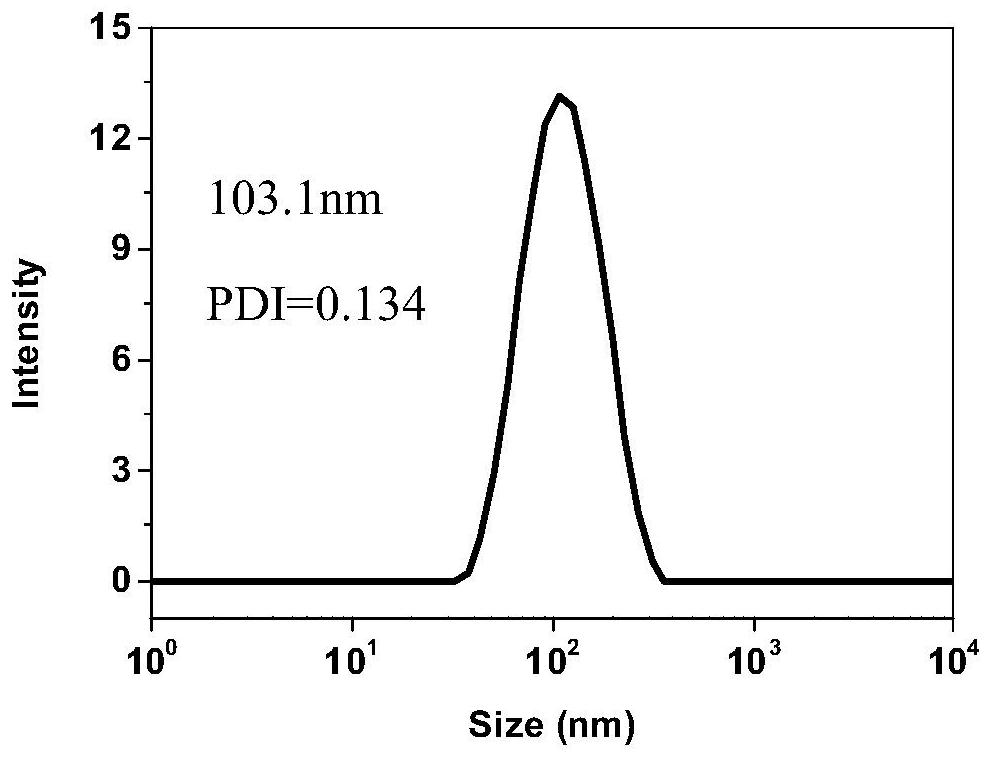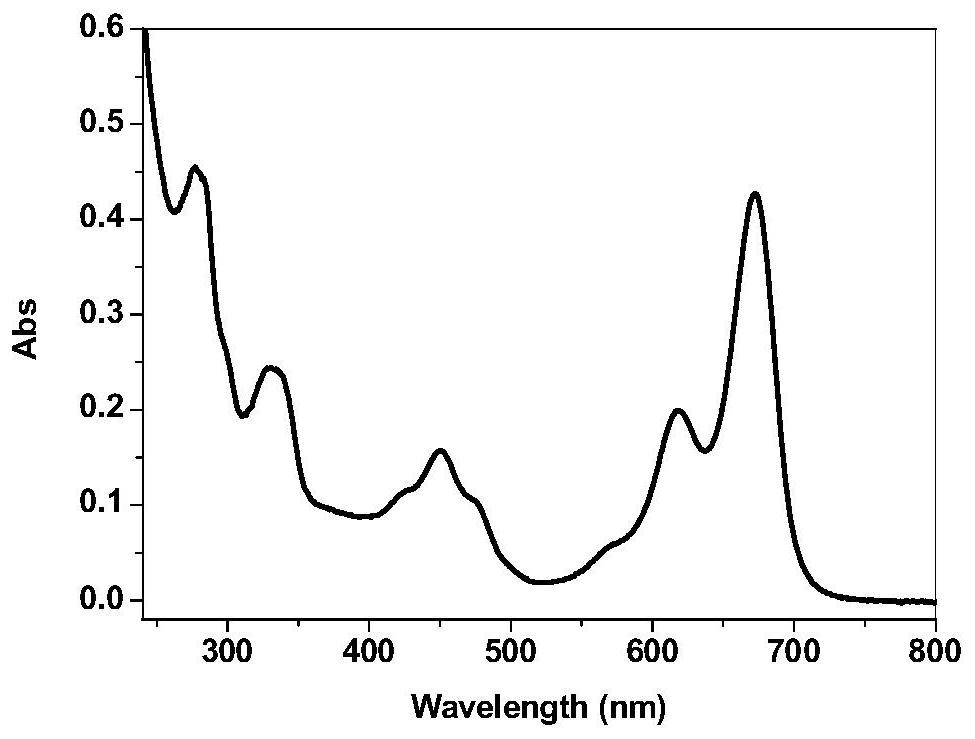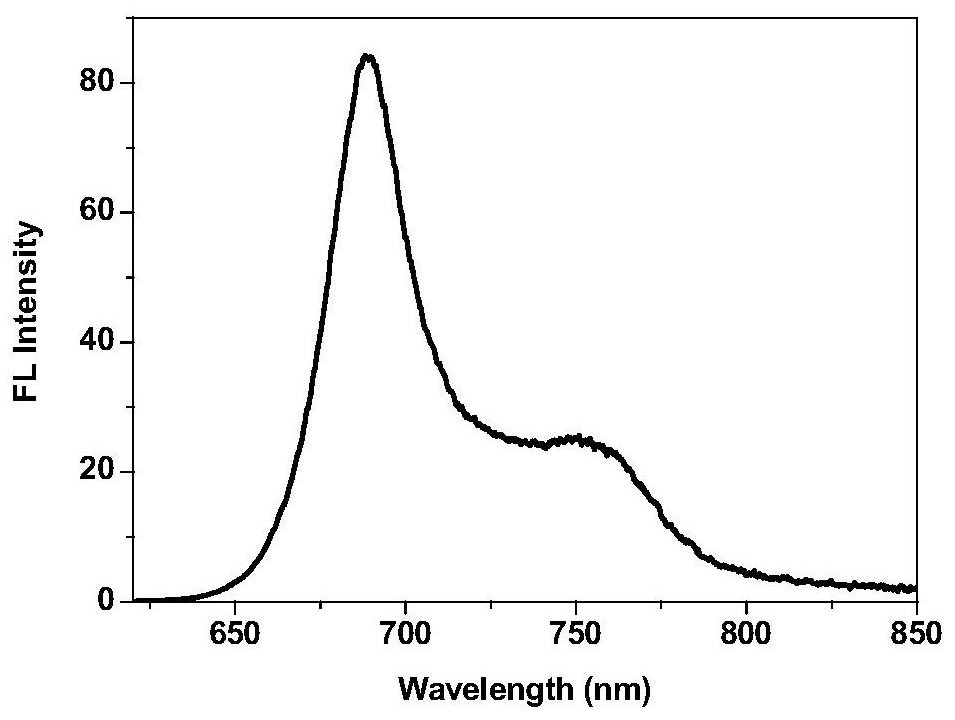Nanoparticle loaded with near-infrared emission fluorescent molecule/sorafenib and preparation method of nanoparticle
A fluorescent molecule and nanoparticle technology, applied in the field of medicine and nanotechnology applications, can solve the problems of no effective means to monitor the efficacy of drugs, poor water solubility of sorafenib, and low bioavailability.
- Summary
- Abstract
- Description
- Claims
- Application Information
AI Technical Summary
Problems solved by technology
Method used
Image
Examples
Embodiment 1
[0019] Weigh 10 mg of polyoxyethylene polyoxypropylene ether block copolymer with a molecular weight of 5000, 1 mg of sorafenib toluenesulfonic acid, and 1 mg of pyrrolopyrrole azafluoroboron compound into 3 sample bottles, and then add 2 mL of tetrahydrofuran , fully stirred and dissolved to obtain solution A, solution B and solution C. Under continuous stirring, mix solutions A, B, and C evenly, add 20 mL of ultrapure water dropwise to the above mixed solution under ultrasonic conditions, and transfer the resulting solution to a dialysis bag with a molecular weight cut-off of Mw=3500Da for dialysis, every 3 Change the water once every hour, and perform dialysis for 48 hours. After the dialysis, filter through a 0.22 μm filter membrane to remove unloaded sorafenib and pyrrolopyrrole azafluoroboron compounds, and obtain loaded near-infrared emitting fluorescent molecules / Nanoparticles of Sorafenib. Perform dynamic light scattering, ultraviolet, and fluorescence emission ana...
Embodiment 2
[0021] Weigh 100 mg of polyoxyethylene polyoxypropylene ether block copolymer with a molecular weight of 9000, 10 mg of sorafenib toluenesulfonic acid, and 10 mg of pyrrolopyrrole azafluoroboron compound into 3 sample bottles, and then add 5 mL of tetrahydrofuran , fully stirred and dissolved to obtain solution A, solution B and solution C. Under continuous stirring, mix solutions A, B, and C evenly, add 50 mL of ultrapure water dropwise to the above mixed solution under ultrasonic conditions, and transfer the resulting solution to a dialysis bag with a molecular weight cut-off of Mw=3500Da for dialysis, every 3 Change the water once every hour, and perform dialysis for 48 hours. After the dialysis, filter through a 0.22 μm filter membrane to remove unloaded sorafenib and pyrrolopyrrole azafluoroboron compounds, and obtain loaded near-infrared emitting fluorescent molecules / Nanoparticles of Sorafenib.
Embodiment 3
[0023] Weigh 1000mg of polyoxyethylene polyoxypropylene ether block copolymer with a molecular weight of 4000, 10mg of sorafenib toluenesulfonic acid, and 10mg of pyrrolopyrrole azafluoroboron compound into 3 sample bottles, and then add 10mL of tetrahydrofuran , fully stirred and dissolved to obtain solution A, solution B and solution C. Under continuous stirring, mix solutions A, B, and C evenly, add 200 mL of ultrapure water dropwise to the above mixed solution under ultrasonic conditions, and transfer the resulting solution to a dialysis bag with a molecular weight cut-off of Mw=3500Da for dialysis, every 3 Change the water once every hour, and perform dialysis for 48 hours. After the dialysis, filter through a 0.22 μm filter membrane to remove unloaded sorafenib and pyrrolopyrrole azafluoroboron compounds, and obtain loaded near-infrared emitting fluorescent molecules / Nanoparticles of Sorafenib.
PUM
| Property | Measurement | Unit |
|---|---|---|
| Hydrated particle size | aaaaa | aaaaa |
Abstract
Description
Claims
Application Information
 Login to View More
Login to View More - R&D Engineer
- R&D Manager
- IP Professional
- Industry Leading Data Capabilities
- Powerful AI technology
- Patent DNA Extraction
Browse by: Latest US Patents, China's latest patents, Technical Efficacy Thesaurus, Application Domain, Technology Topic, Popular Technical Reports.
© 2024 PatSnap. All rights reserved.Legal|Privacy policy|Modern Slavery Act Transparency Statement|Sitemap|About US| Contact US: help@patsnap.com










